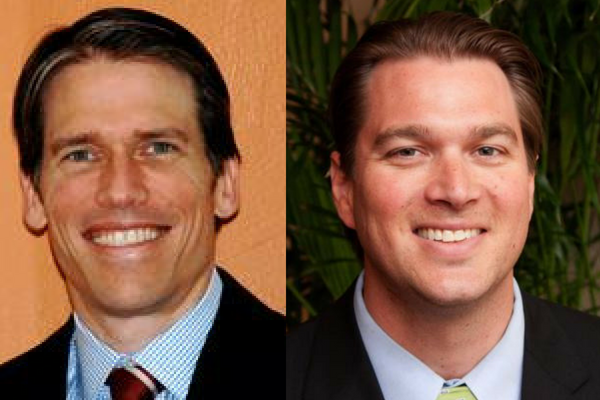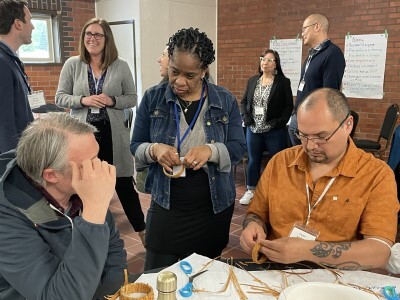Utilizing Special Revenue Funds for Innovative School Designs
Topics

Next generation learning is all about everyone in the system—from students through teachers to policymakers—taking charge of their own learning, development, and work. That doesn’t happen by forcing change through mandates and compliance. It happens by creating the environment and the equity of opportunity for everyone in the system to do their best possible work.
Are you a K-12 educator or school leader aiming to fund a bold new school design? Does the mere mention of Title I, Title II and IDEA funding make your head spin? We’ve assembled a blog series just for you!
Are you a K-12 educator or school leader aiming to fund a bold new school design? Does the mere mention of Title I, Title II and IDEA funding make your head spin? We’ve assembled a blog series just for you! In this first post, we’ll demystify some of these funds and provide expert advice to get you started. We hope you’ll join the conversation too.
Highlights from today’s blog—key principles to adhere to:
- Develop a multi-year plan—link finance and academic strategy
- Use of different special revenue funds are highly interconnected—plan accordingly!
- Create a funding plan that allows maximum flexibility
- Be conservative and plan for variability
First, what are special revenue funds? For this blog series, special revenue funds are defined as those revenues available to schools other than local or general fund dollars. These funds typically comprise 5% to 20% of a school or district’s budget, and are highly monitored and regulated. Material sources of special revenue include:
- Title I allocates supplemental funding toward the direct benefit of students;
- Title II for teachers’ professional development;
- IDEA constitutes funding for special education purposes (and as such, is extremely focused in its scope);
- eRate involves infrastructure dollars through the U.S. Federal Communications Commission (FCC) for technology and communications tools for schools;
- School Improvement Grants (SIG) provides competitive funds to substantially raise the achievement of students in the lowest performing schools;
- USDA child nutrition has various funding streams for snacks, breakfast, lunch, summer and other programs.
The amount allocated isn’t always based on student enrollment, but the funding boost can provide significant support for Personalized Learning (PL) schools, if planned for effectively and appropriately.
How Can You Avoid Funding Pitfalls Right Out of the Gate?
Afton Partners, K-12 school finance experts, provide guidance on how to avoid common issues with special revenue funding, and Erin Mote, co-founder of Brooklyn LAB offers practical tips she uses at her school:
1. Develop a multi-year plan.
Bold school designs take significant time and investments across the educational spectrum, from new staff roles and responsibilities to technology and infrastructure. Develop a collaborative, comprehensive plan that reflects your breakthrough design, and identify opportunities to leverage special revenues funds accordingly.
Erin Mote, co-founder at Brooklyn LAB, adds: “have a budget that is related to what you are actually going to spend and receive (i.e your expenses and revenues shouldn’t have surprises or guesses in them). A formulaic budget that is not realistic or iterative makes it hard to track expenses, limits your reimbursements, and makes you work harder and not smarter.”
2. Use of these funds are interconnected—plan accordingly.
Leverage the multi-year plan to identify opportunities to utilize special revenue funds to cover programmatic expenses. Title I, Title II and eRate could collectively help fund supplemental initiatives, particularly those related to personalized learning models.
“eRate is a particular [challenge], but it’s beneficial for an integrated personalized learning model. If you do it right, it’s invaluable. I recommend finding a good consultant who will walk through the application process. A lot of consultants will take a percentage, but you want someone that will teach you as you move through the process. The bad consultants will not provide education regarding the planning, use and reimbursement of funds,” says Mote.
3. Create a funding plan that allows you to maximize spending flexibility.
Be realistic about the amount you’re receiving, and also be aware of how funding can be split in the budget line items. Keep in mind that payroll is easier from a compliance standpoint than purchasing supplies, and that larger chunks of money take the same amount of work to reconcile as smaller amounts.
Mote advises schools to “align your programmatic scope and big ticket items that are the most simple to make a paper trail. Take care to use special revenues where you have good documentation. Don’t buy pencils with Title I!”
4. Be conservative and plan for variability.
Austere estimates never hurt anyone. Project expenses are subject to all sorts of variation during the year, so you must be ready to adapt. You’ll get an estimate from the authorizer or SEA in April or May. In September that amount may be different than anticipated, and by December, you might receive more funding based on enrollment. Allocations can change, and grant cycles reflect that.
“From a management perspective, we budget conservatively regardless of which funding source it is. The challenge is that it’s not predictable and those funds flow through [New York] city (with the exception of eRate and funds tied to IDEA). The person above you on the food chain will determine your funds, your cash and how much you have to push. Don’t count on it to spend on teacher salaries or as cash for startup. And every school needs an advocate, find someone to help you navigate the waters,” Mote advises.
The Bottom Line
With special revenue funding, the important thing to remember is this is not an accounting exercise or just programmatic—it involves linking finance and academic strategy from an early planning stage through implementation and growth. Some advance planning and a lot of ongoing communication between the academic and fiscal sides of your operation are the keys to your early success. That’s where school leaders can really knock it out of the park.
In subsequent blogs in this series, we will explore specific, practical examples related to each key principle, and how operators of breakthrough schools have maximized the use of special revenue funds to successfully launch and grow their school models.
Go to the next post, School Leaders Guide to Special Revenue Funds and Effective Grant Management




